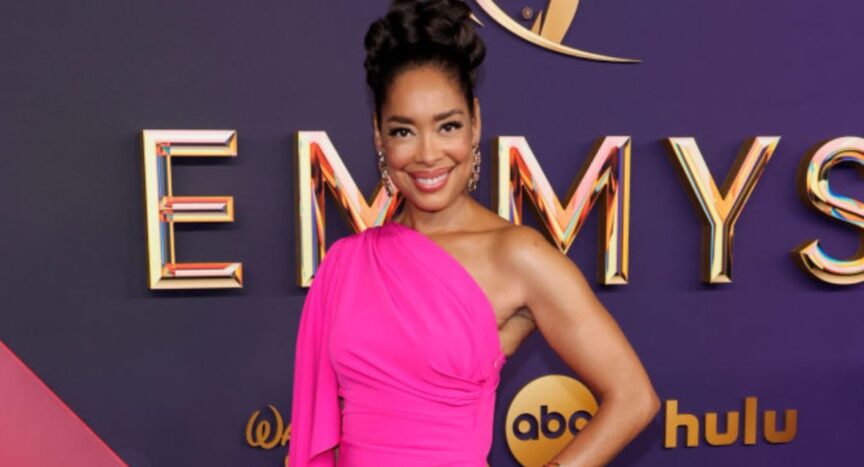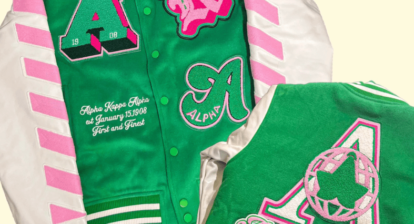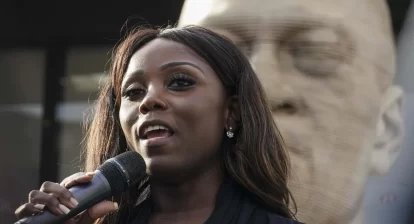From “Afro-Latinx Revolution: Puerto Rico” to “Black Mexicans,” there is a wave of new television and films that illuminate the diverse experiences of Afro-Latinos and Afro-Latinx people around the globe.
With an estimated 6 million Afro-Latinos living in the United States — and many more throughout the globe — it’s important for stories on the small and large screens to represent this demographic. Trailblazing Afro-Latinx actors and creators are behind a variety of stories that demonstrate the cultural intersectionality of being Black and Latino. What’s more, they show individuals and families don’t have a single narrative, but diverse, complex, and compelling stories from more than 30 countries and territories under the umbrella of Latin America.
Find out more about some of the creators and performers breaking barriers in Hollywood and discover some potentially new-to-you Afro-Latinx films and television shows below.
What is Afro-Latinx representation in film and TV?
Afro-Latinx representation is all about telling the stories of Black Latino or Latinx individuals. During the trans-Atlantic slave trade, more than one-third of enslaved Africans were trafficked to Latin America. This means that African culture, traditions and genealogy went to these countries, creating unique stories and histories that inspire today’s Afro-Latinx culture. Whether you’re watching your favorite show or a new film, these key elements are important:
- Visibility of Afro-Latinx celebrities and characters. The positive portrayals of Afro-Latinx characters and the casting of Afro-Latinx performers in key roles help increase diversity in film and TV while ensuring more visibility for Black people. Too often in Latino media, Black Latinos are erased despite their essential role in shaping Latino culture.
- Authenticity matters. The unique experiences of individuals who identify as Latinx and Black should shine through, with cultural traditions, complex histories, and numerous languages being part of storylines. Stereotyping Afro-Latinos in roles like “maid” or “criminal” reflect a biased and limited thinking around representation that overlooks realities.
- Themes of intersectionality. Afro-Latinx representation is complex, as it often involves demonstrating intersecting cultures — and perhaps even the character’s own struggle with these competing identities.
5 Afro-Latinx film and TV shows to watch
Black television and film often default to African American storylines. Some creators and critics worry that Black African and Black Latino stories are limited and that representation of Black subcultures doesn’t exist in full measure in Hollywood. A growing list of Afro-Latinx films and television shows is beginning to make a dent in that issue. Here are some you can start with if you’re interested in Afro-Latinx representation on the screen.
“Afro-Latinx Revolution: Puerto Rico” (2020)
In “Afro-Latinx Revolution,” Natasha Alford of TheGrio travels to Puerto Rico to explore the Afro-Latinx identity and the ongoing fight for racial justice on the island. The documentary shines a light on the history and contemporary experiences of Black Puerto Ricans people, confronting issues of erasure, racism, and the resurgence of pride in Afro-Latinx heritage. Through interviews and on-the-ground reporting, Alford, who herself is Afro-Latina, showcases powerful stories of resilience and activism, bringing much-needed visibility to Afro-Latinx voices.

(Photo via theGrio)
“Black Mexicans” (2018)
This documentary feature film is the first of its kind. It was filmed in Mexico amid Afro communities that are not recognized as a culture or group and deal with discrimination and other challenges as a result. Filmed entirely in the local communities without paid actors, the film documents the culture and identity of the Afro-Mexican community.
“Beba” (2022)
“Beba” follows the story of Rebeca Huntt, an Afro-Latina individual with ancestors from Venezuela and the Dominican Republic. Huntt takes the viewers through her POV as she learns about her history and seeks to find change for herself and her culture that is positive given the lessons that have come before.
“Pelo Malo” (2013)
“Pelo Malo” takes a deep dive into identity and race politics within Afro-Latinx and Latinx communities through the seemingly simple plot device of a struggle with “bad hair.” The film tells the story of a 9-year-old boy who struggles with curly hair—a physical embodiment of his mixed heritage. While his obsession with straightening his hair dominates the plotline, the subtext is all about identity and the struggle of some to find where they fit into intersecting cultures.
“Marighella” (2019)
“Marighella” tells the story of Carlos Marighella, a revolution leader and writer in 1960s Brazil. Marighella was fundamental in the revolution against the military dictatorship in Brazil at the time. The 2019 move is a force of Afro-Latinx representation. It tells the true story of a critical event in Brazil’s history and the involvement of an Afro-Latinx individual while bringing Afro-Latinx performers to the screen to do so.
On My Block (2018-2021)
This coming-of-age television comedy-drama on Netflix tells the story of four teenagers and their lives in and near a mostly Afro-Latinx LA neighborhood. The show includes main characters who grow up in mixed-race households and leverages those situations to explore storylines about race, class, and identity.
Exploring Afro-Latinx identity in Film and TV: Impact and empowerment
Afro-Latinx culture has, historically, been ignored by the entertainment industry and others. Jorge Pérez Solano says that’s one of his motivations for making documentaries and films about Afro-Latinx culture and people. “There’s a community that forms an important part of our history and contemporary society which we ignore,” Solano said in an interview. “It’s important that we recognize them and treat them equally.”
Black-Cuban American actor, Laz Alonso, also spoke about the racial consciousness that is informing the Afro-Latinx community’s engagement with representations on screen.
“There is a re-education that has to take place whereas Black people from all over Latin America understand that they are Black, you know? If you want to call yourself mulatto, okay, but guess what? That means you’re still Black, you’re just a lighter version of Black,” Alonso told REVOLT in an interview.
“It’s years and years, I’m talking hundreds of years, of a colonized mindset that has to be reeducated and that’s part of the beauty of the awakening that’s happening right now. A lot of people are now saying, “You know what? All this time I’ve been told I was this when all along, I was this and I am really this and I’m proud of being this.” I think that’s what’s happening right now is that a lot of Afro-Latinos are awakening.”
This awakening is happening is happening for many as more filmmakers are including Afro-Latinx storylines and actors in projects, and short films. Documentaries like theGrio’s Afro-Latinx Revolution are joining feature films like Solano’s projects in bringing Afro-Latinx culture and identity to the forefront. This growing awareness of diverse culture in the Black Diaspora elevating previously untold stories is empowering Black people everywhere to see their connections.
Recommended Stories
- 10 Black Latino celebrities breaking barriers in Hollywood
- Black women in Puerto Rico suffer painful racism against natural hair. Will new law change things?
- Watch: 5 questions with Fat Joe
- ‘Afro-Latinx Revolution’ Documentary explores Black Identity in Puerto Rico
- Tennessee Three’s Justin J. Pearson says Harris ‘fought for us,’ so he’s returning the favor
!function(){var g=window;g.googletag=g.googletag||{},g.googletag.cmd=g.googletag.cmd||[],g.googletag.cmd.push(function(){g.googletag.pubads().setTargeting(“has-featured-video”,”true”)})}(); ( () => { ( ( cb ) => { window.tpd = window.tpd || {}; if ( true === tpd.cmpReady ) { console.log( ‘[TPD][Brid] CMP was already ready, running player.’ ); cb(); return; } let tpdCmpReadyListener = () => { console.log( ‘[TPD][Brid] CMP ready event fired, running player.’ ); window.removeEventListener( ‘tpd:cmpCb’, tpdCmpReadyListener ); cb(); }; window.addEventListener( ‘tpd:cmpCb’, tpdCmpReadyListener ); } )( () => { let s = document.createElement( ‘script’ ); s.src = ‘https://player.target-video.com/player/build/targetvideo.min.js’; s.async = true; let target = document.getElementById( ‘Brid_1776063’ ); target.parentElement.insertBefore( s, target ); window._bp = window._bp || []; window._bp.push( {“div”:”Brid_1776063″,”obj”:{“id”:”41122″,”width”:”1280″,”height”:”720″,”stickyDirection”:”below”,”video”:”1776063″,”slide_inposition”:”.widget_tpd_ad_widget_sticky”}} ); } ); } )();




